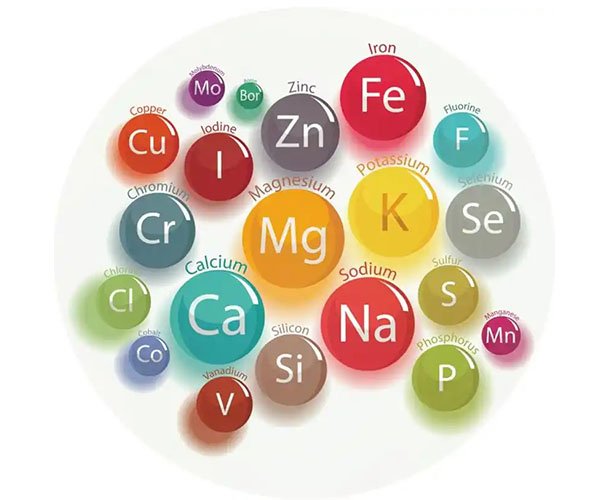Micronutrients are essential minerals required by plants in small amounts. Although they are present in tiny quantities, they play a crucial role in plant growth, development, and disease resistance. Common micronutrients include iron, manganese, zinc, copper, boron, and molybdenum.
The Role of Micronutrients in Agriculture
1. Increasing Crop Yields
- Targeted Application: Micronutrient fertilizers are an effective way to improve yields in medium- and low-yield soils, which account for over 70% of total arable land. Many high-yield soils, however, have seen limited improvements due to the excessive use of major nutrients like nitrogen (N), phosphorus (P), and potassium (K), which degrade soil quality. Applying micronutrients is an important measure to sustain high yields over time.
- Significant Yield Gains: Micronutrient use can boost yields by 5%-50%, with the most pronounced effects observed in medium- and low-yield fields. In regions severely lacking micronutrients, the application of trace elements to crops like fruit trees and vegetables can increase yields by up to 100%.
2. Improving Crop Quality
- Nutrient Balance: The use of balanced compound fertilizers improves the inorganic nutrient balance in crops, leading to significant improvements in both yield and quality. For example, micronutrient application can prevent diseases caused by nutrient deficiencies and enhance the nutritional value of agricultural products, such as higher protein, sugar, vitamins, and micronutrient content in grains, vegetables, and fruits.
- Enhancing Economic Crops: For economic crops like cotton and ramie, micronutrient use can increase fiber strength, thus improving their market value.
3. Reducing Pest and Disease Impact
- Strengthening Resistance: The application of micronutrient fertilizers ensures a balanced and adequate supply of essential elements, which strengthens crops’ resistance to diseases, cold, heat, and drought. For example, the application of boron promotes proper sugar metabolism in crops, enhancing their disease resistance. B-sugar complexes create an acidic environment in plant cells, which is unfavorable to pathogen growth.
Effectiveness of Micronutrients
1. Absorption Forms
Plants can only absorb micronutrients in water-soluble ionic or chelated forms. For instance:
- Iron (Fe) is absorbed as Fe²⁺ or metal complexes.
- Manganese (Mn) is absorbed as Mn²⁺ or metal complexes.
- Zinc (Zn) is absorbed as Zn²⁺ or metal complexes.
- Copper (Cu) is absorbed as Cu²⁺ or metal complexes.
- Boron (B) is absorbed as H₂BO₃⁻.
- Molybdenum (Mo) is absorbed as MoO₄²⁻.
- Chlorine (Cl) is absorbed as Cl⁻.
- Sodium (Na) is absorbed as Na⁺.
2. Availability in Soil
Many micronutrients are not absent in soils but are present in stable compounds that plants cannot absorb. The availability of these nutrients is influenced by several factors:
- pH Levels: Micronutrient availability increases under acidic conditions and decreases in alkaline soils. A soil pH of 6.5 is ideal for optimizing micronutrient availability.
- Redox Potential: The redox potential influences the oxidation states of elements, affecting their availability. For example, manganese is readily available in reduced (Mn²⁺) form, but in alkaline, poorly-drained soils, manganese may exist in its higher oxidation state, making it unavailable to plants.
- Organic Matter: Soils rich in organic matter tend to have higher micronutrient levels. Humic substances, such as fulvic acid, can chelate micronutrients and enhance their availability.
3. Antagonistic Interactions Between Nutrients
Nutrient interactions are complex, and some elements may have antagonistic effects on others. For instance:
- Phosphorus and Zinc: High phosphorus levels or the excessive application of phosphorus fertilizers can exacerbate zinc deficiency in crops.
- Phosphorus and Molybdenum: Phosphorus and molybdenum can have a synergistic effect, where the combined application is more effective than when applied separately. However, when phosphorus is insufficient, the benefit of molybdenum application may not be realized.
Application of Micronutrient Fertilizers
Micronutrient fertilizers are typically applied in lower quantities compared to major fertilizers, but their impact is significant:
General Guidelines:
- For most field crops, the application rates of zinc sulfate are about 1-2 kg per acre, and borax is around 0.5-1 kg per acre.
- For fruit trees and vegetables, the application may be slightly higher, typically not exceeding 3-5 kg per acre.
Application Methods:
Micronutrient fertilizers often mix with organic fertilizers or soil amendments before planting or transplanting, typically applied as basal fertilizers in furrows or holes.
Avoid Mixing with Phosphorus Fertilizers: Micronutrients, when mixed with phosphorus fertilizers, may form insoluble compounds, reducing their effectiveness. Hence, it’s best not to mix them together during application.
The strategic use of micronutrients is crucial for enhancing agricultural productivity, quality, and resistance, particularly in regions with deficient soils or those facing specific crop challenges.


